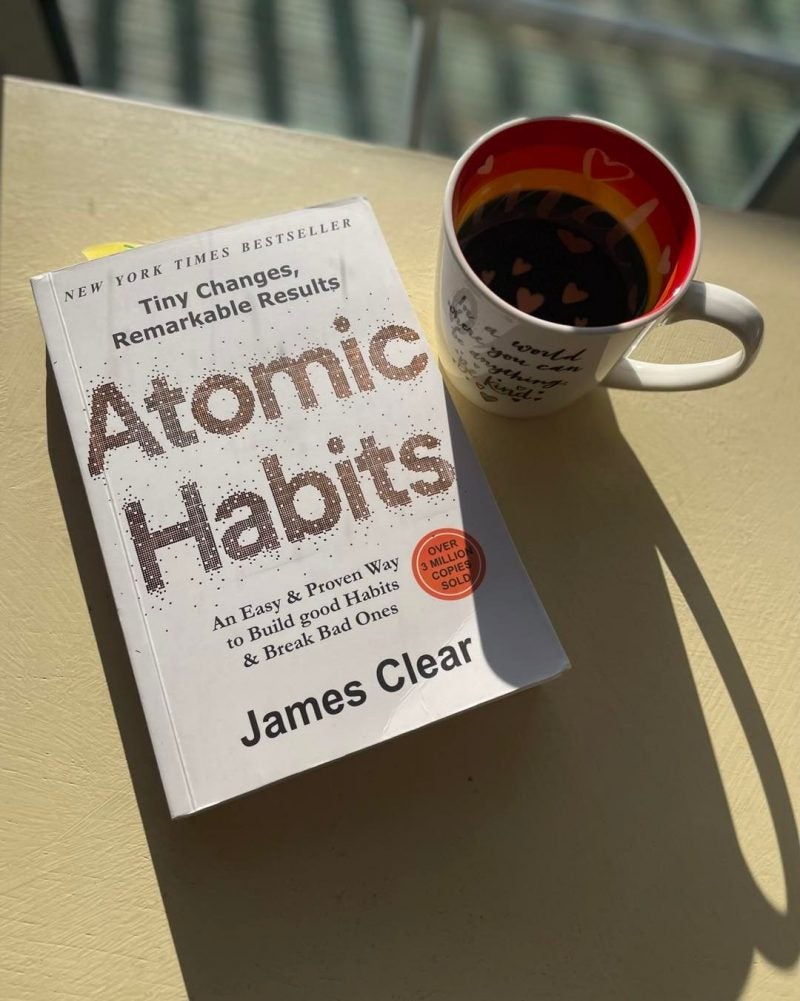Have you ever decided on changing something in your life but then struggled to actually go through with it? The answer to this is yes for the absolute majority of us. Whether it’s improving your sleeping schedule, eating healthier foods, doing more exercise or spending your leisure time more productively – introducing changes, no matter how small, into an established routine requires a lot of effort. It is all about building a routine of good habits that will help you stick to those promises. But how do I do that, you ask?
Born in Hamilton, Ohio, James Clear is one of the most appreciated authors in the self-help book genre as well as one of the most popular speakers in the Aurum Speakers Bureau. His revolutionary book Atomic Habits has sold more than 9 million copies worldwide, therefore becoming a #1 New York Times bestseller. The author is focused on helping his readers turn bad habits into good ones using various simple processes and systems you can adapt, this way making your time more productive and meaningful without overwhelming yourself. Here are some of the key ways to do this according to James Clear.
How to build good habits
James Clear is a big believer that building good habits is not about the initial outcomes but rather the process that leads you to who you want to be. This will require a lot of time and patience, essentially making small daily changes that will contribute towards growth in the future, or as the author says, improving by 1% everyday.
The process of building a new habit can be divided into 4 main stages: cue, craving, response and reward. This is the backbone to Atomic Habits, which will help you stay consistent and stick with it. Cues are all about the things that trigger your brain to initiate a certain behavior, meaning that you also associate them with a particular reward. Your internal or external environment is one of the most important cues that your brain initially recognises. You may use such cues as time, your emotional state, location, preceding events and other people in order to start new habits.
Cravings are the natural next step that comes after cues. It is concerned with the feelings and emotions surrounding these cues that become the motivation, or craving, for our habits. For instance, being in the gym may not motivate you but feeling fit and energized after your workout is more likely to trigger a desire to do it.
The third stage, response, is the actual action or the habit that you do as a result of the cue and craving. Whether or not you actually do the response depends on how motivated you are to do it – if it feels like too much physical or mental effort, this is the stage at which you may fail. Essentially, you must be capable of doing the habit in order to do it.
Lastly, once a response is completed, you get a reward. Reward is there to satisfy your cravings – it’s the end goal and the whole reason the cues work to begin with. In addition to this, rewards teach us about the different habits that are worth doing in the future, since our brains start associating them with bringing benefits and satisfaction. Once you understand this cycle of habits, you can start noticing it and applying it in practice.
The rules of behavior change towards good habits
Just following the stages of habits is not enough, though. You need to ensure that the good habits you want to build for yourself will not be easily replaced by bad habits once again. According to James Clear, this can be done by following the following four rules of behavior change:
- Make it obvious
- Make it attractive
- Make it easy
- Make it satisfying
If you apply each of these to your good habits, while making your bad habits more unattractive, difficult, unsatisfying and not obvious, you are more likely to stick with your new routine as well as improve your behavior long-term. For example, if you are a smoker who wants to quit, you may get rid of your cigarettes, give yourself penalties for smoking, only allow yourself to smoke outside in the cold and so on. As a result, smoking will become an activity that requires a lot of effort and the rewards of it may not be worth it anymore.
Mindfulness as a compliment to your habits
While the above steps will provide you with a roadmap and a specific system of how to build a routine of good habits, it will by no means be an easy journey. It still requires a lot of discipline as well as a desire to invest into your future and change your life for better. This process requires a lot of inner work and self-awareness which, in turn, makes you a more mindful person too. This means that you will be able to pay full attention to your own actions, notice your behaviors, understand the reasons behind them and find the best ways to fix them based on the tips by Atomic Habits.
Final word
Thousands of readers across the world have praised James’ best-selling book for helping them turn their lives upside down and become better people. While the concepts in the book are presented in a very simple way, the author draws these ideas from years of research into a number of different areas, such as psychology, biology, neuroscience, etc.. If you are interested to hear more from him, you can book motivational speaker James Clear for your organizational or educational event.




















